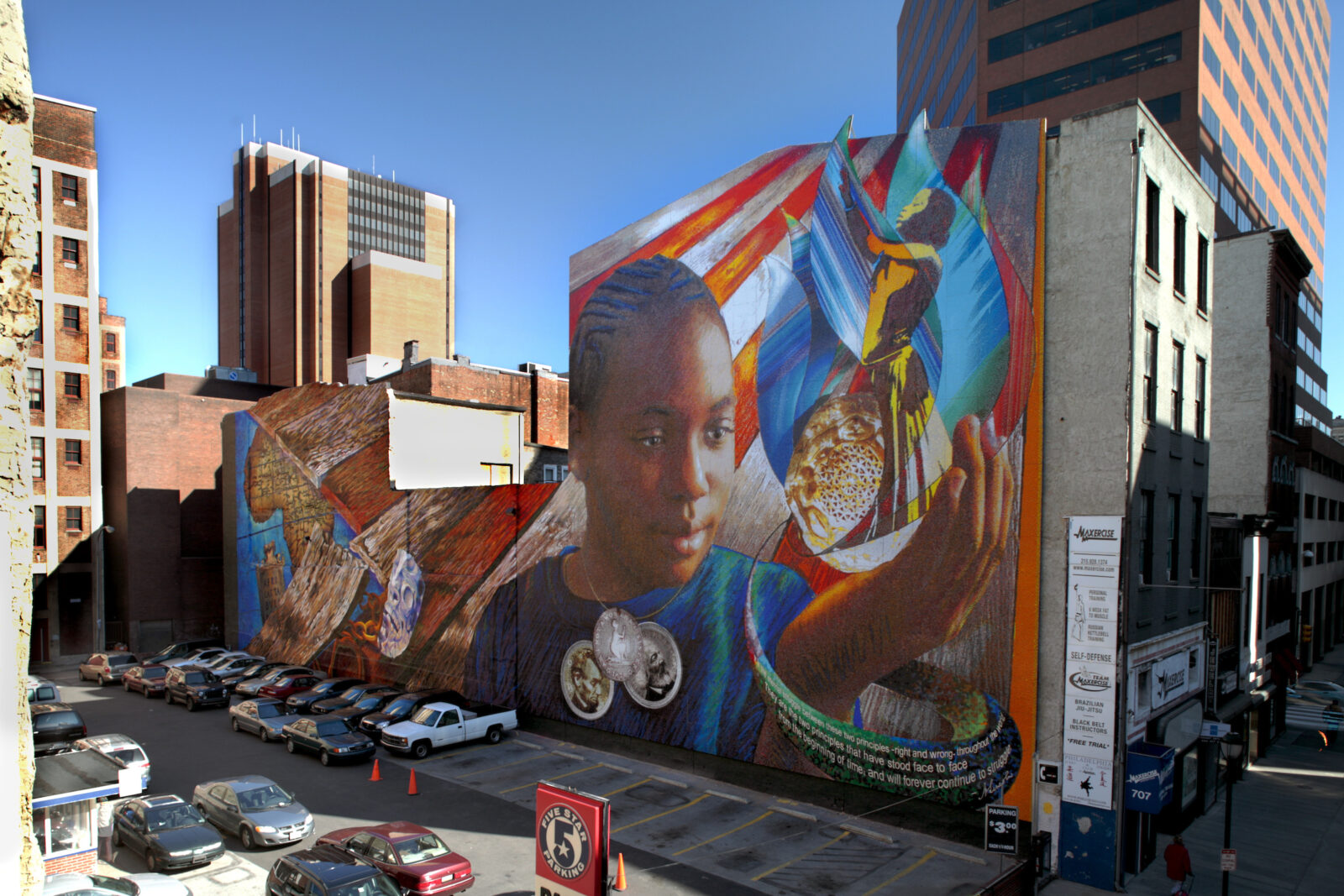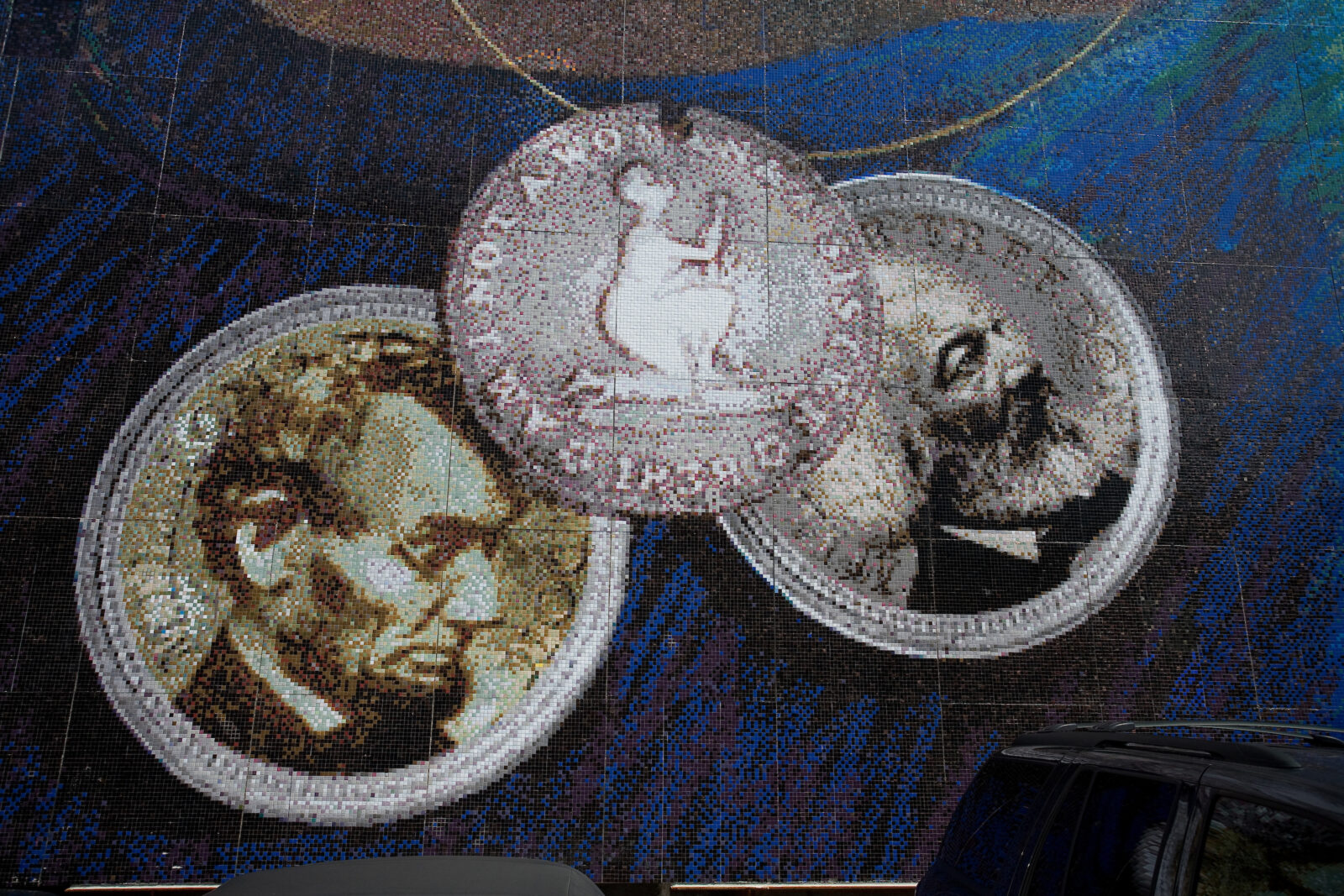Frederick Douglass and The Power of Imagery

It’s fitting that renowned social justice activist/abolitionist Frederick Douglass is included in at least four city murals. Douglass, who died in 1894, recognized the power of imagery. He was the most photographed man in America in the 19th century, sitting alone or with others for more than 160 photos.
Douglass knew “that pictures allowed him to present himself as a person worthy of respect and dignity equal to any white man, and to challenge slavery and the era’s racist social norms,” according to the National Park Service’s description of the many Douglass images on display at the Frederick Douglass National Historic Site in Washington, DC. “His belief in the importance of representation is seen throughout the house in portraits, books, busts of friends in the abolitionist movement, and more. In Douglass’s portraits, he is in a suit and tie, sitting with his fists clenched, and his eyes sternly focused on the camera.”
Douglass was born in Maryland in 1818 to an enslaved African mother. (His father was most likely the white man who held her captive.) He was 20 when he escaped his captor and went north. It took him 24 hours to reach the New York home of a noted abolitionist. Douglass, a prolific writer who penned three autobiographies and many influential anti-slavery essays, later described that experience thusly:
“I have often been asked how I felt when first I found myself on free soil. And my readers may share the same curiosity. There is scarcely anything in my experience about which I could not give a more satisfactory answer. A new world had opened upon me. If life is more than breath, and the ‘quick round of blood,’ I lived more in one day than in a year of my slave life. It was a time of joyous excitement which words can but tamely describe.”
Douglass became one of the country’s best-known abolitionist activists, sometimes risking his safety to share his message. He also published anti-slavery newspapers. He was a member of the Underground Railroad; it’s believed he and his wife welcomed more than 400 people seeking freedom to their New York home.
Philadelphia in the early 19th century was a well-known anti-slavery stronghold, and Douglass was a frequent visitor, speaking at Independence Hall and other venues. In 1855, he and Harriet Tubman were among the many to visit abolitionist Passmore Williamson at Moyamensing Prison, which occupied the land that now houses an Acme supermarket at 1400 E. Passyunk Avenue.
In the 1860s, Douglass encouraged those of African descent to join the Union Army, holding that ending slavery was the highest purpose of the Civil War. In 1863, he joined members of the newly formed Union League for a rally and recruitment drive in the city. In 2021, the Union League installed a portrait of Douglass as part of its permanent collection.
The city acknowledged Douglass’s contributions to the country when, in 1895, the city’s first Black hospital at 15th and Lombard Streets was named in his honor. The institution’s policy was to treat all patients regardless of their ability to pay. The hospital closed in the 1970s.
Frederick Douglass’ Mastery Charter School in North Philadelphia still carries his name.
Murals Featuring Frederick Douglass
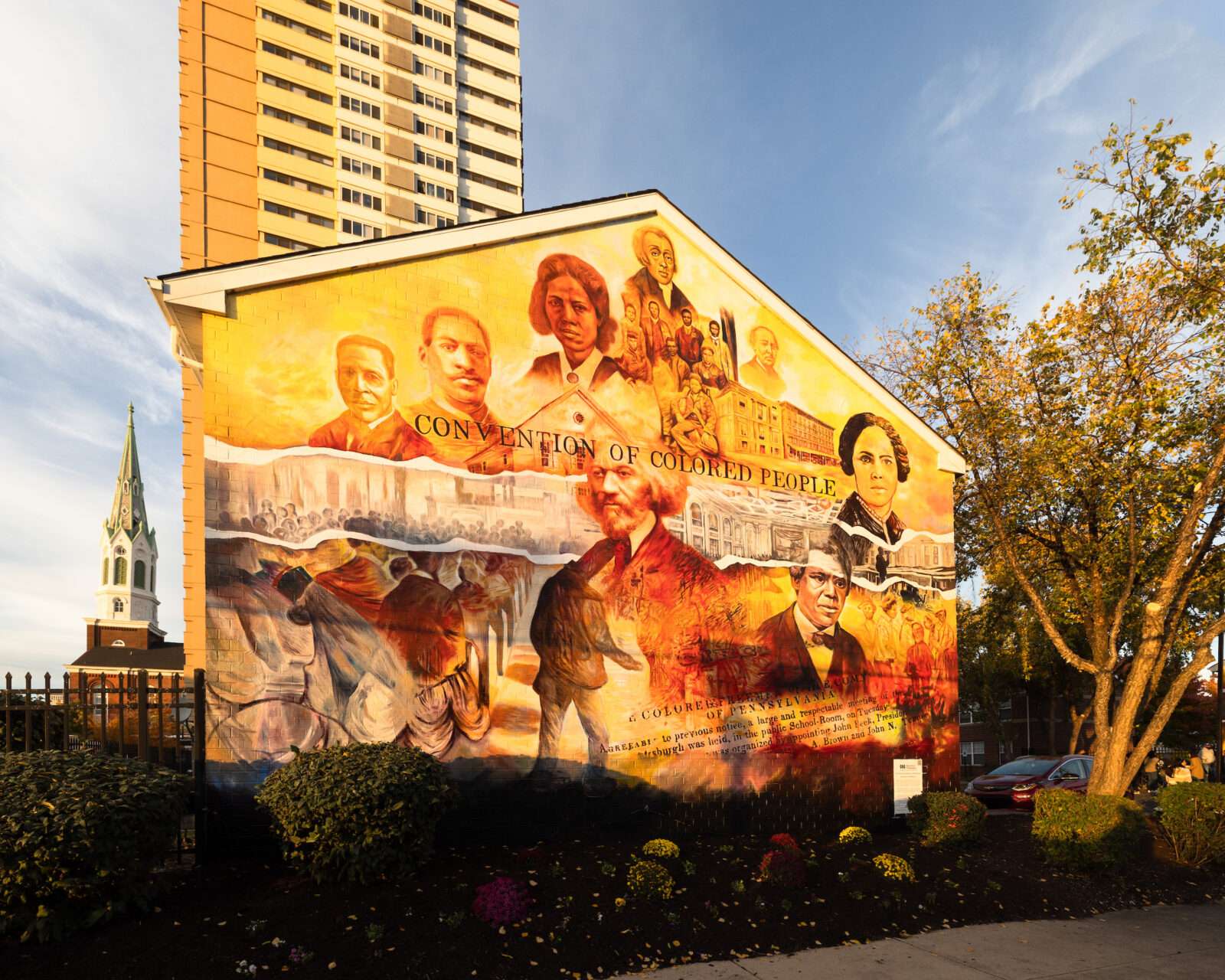
Two murals on the same block commemorate the inaugural “Colored Convention” in Philadelphia in 1830, a gathering of Black American leaders who came together to politically organize and advocate not only the abolition of slavery in southern states but also for equal education, voting rights, and other social justice issues in free states. Douglass’s image is unmissable in one of the murals.
This is one of three murals created to honor President Abraham Lincoln, funded by the Lincoln Financial Foundation. The images in the 10,000-square-foot work, which includes thousands of mosaic tiles, include the outline of Africa, the deck of a slave ship, shackles, and an American flag. The largest image is of a Black child, representing a free future, wearing three medallions: One features Douglass’s face, another Lincoln’s; and the third the outline of a figure on bended knees with the message “Am I Not a Man and a Brother.”
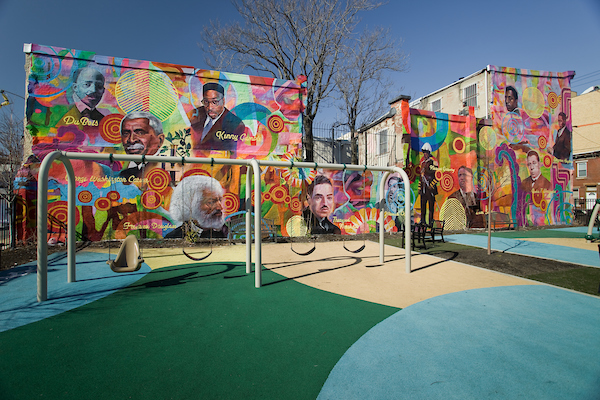
This mural covers the east and west walls surrounding Uncle David’s Universal Playground at 15th and Catherine Streets. Among the figures depicted are Frederick Douglass, Rev. Leon Sullivan, and a little girl named Shakira Hinton, a straight-A student at Universal Charter School, whose life was cut short in a tragic incident. The project was developed through a partnership between Kenneth Gamble’s Universal Companies and the City of Philadelphia.
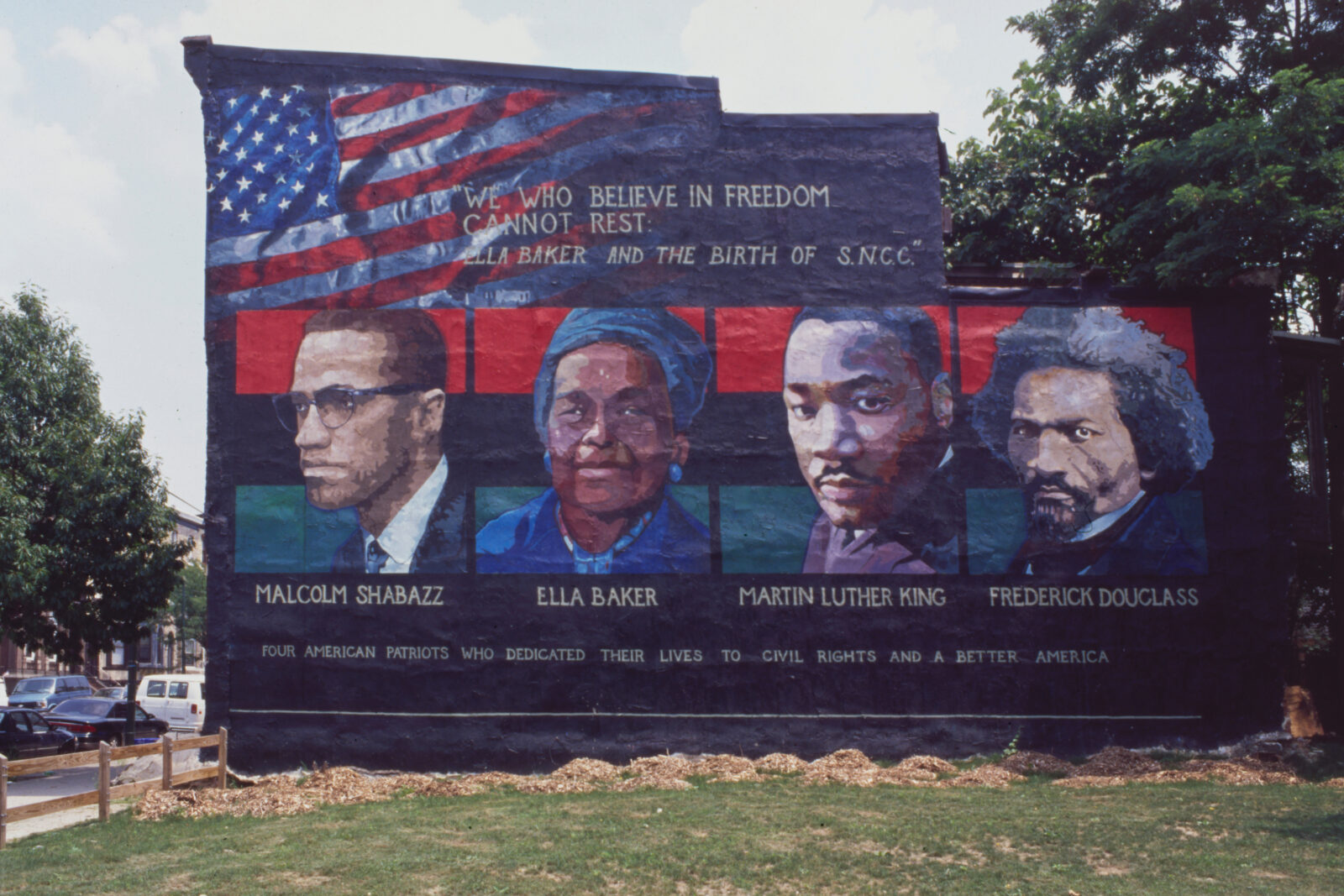
The mural features portraits of four Civil Rights legends: Malcolm X, Martin Luther King Jr, Ella Baker, and Douglass. The title comes from a speech Baker gave in 1964 and this line: “Until the killing of black men, black mothers’ sons, becomes as important to the rest of the country as the killing of a white mother’s son, we who believe in freedom cannot rest.”
